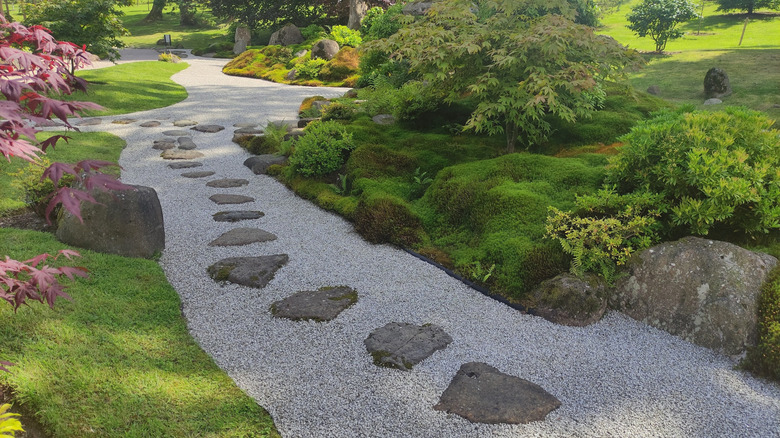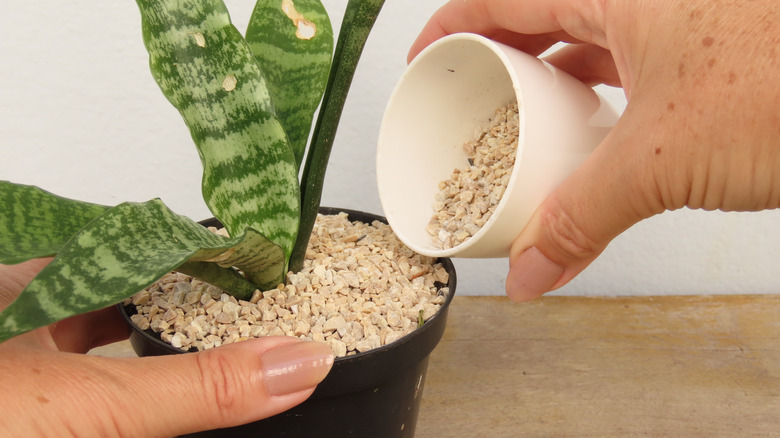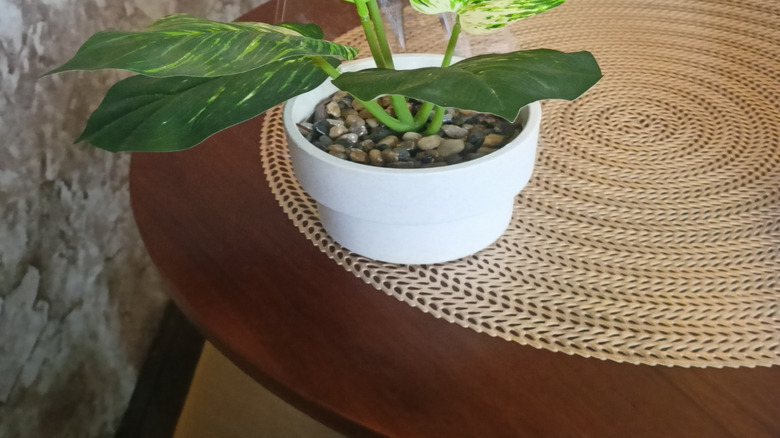Can You Use Outdoor Gravel On Indoor Plants?
Gravel is a versatile and popular material in landscaping: It's common in driveways far and wide, decoratively lines fire pits and water features, and makes a beautiful alternative to mulch. There are many stunning gravel garden ideas to transform your outdoor space, along with ways to utilize it for drainage control. But does its usefulness extend to indoor plants? Houseplant and gardening enthusiasts have had success when growing their indoor plants in outdoor gravel, either as a layer on top of the soil or, in the case of air plants, without soil at all.
Outdoor gravel comes in different shapes, sizes, and colors to suit your design preferences and needs. For instance, river rocks are smooth, dark gray, and soft-edged, mostly used decoratively in water features but also for drainage in dry river beds. Gravel has even embellished indoor bathrooms in the form of pebble shower floors, showcasing colors like black, earth tones, and marbled white. And gravel can also adorn the tops of plant pots indoors, adding aesthetic flair while extending benefits to the soil.
Benefits of using gravel on houseplants
The visual appeal of gravel for indoor plants is undeniable. Looking at soil sitting at the rim of your plant pot just doesn't have the same oomph as gravel. Soil can look grubby and unclean, while gravel in its many shapes and colors has a penchant for looking polished and neat. With so many options, your home's aesthetic doesn't need to suffer; if anything, adding gravel to indoor plants is an opportunity to fine-tune your indoor design choices as you decorate your home with plants.
Beyond the aesthetic value, outdoor gravel can positively impact the health of your indoor plants and soil. You won't have the annoyance of soil splattering up when you water. Plus, fungus gnats, pests that lay their eggs on the top layer of moist soil, are kept at bay because the gravel creates an inhospitable environment. Gravel also keeps the soil moist longer because it buffers the top layer from dry air, similar to an outdoor mulch.
Plants that thrive in gravel
Plants that need moist conditions will benefit most from adding gravel over the top layer of soil. Christmas ferns (Polystichum acrostichoides), one of the most common fern varieties in the Southeast U.S., are a great option since they require moist (but not wet) soil conditions. Pothos (Epipremnum aureum) like shallow rocky soil that's well-drained, so as long as you don't overwater, this plant is going to thrive and stun with a layer of gravel on top. Keep in mind that this plant is poisonous to humans if ingested and is also toxic to pets.
Take it a step further by creating a visual focal point with a glass container filled entirely with gravel rather than soil — perfect for air plants and some types of orchids. Brazilian orchid (Cattleya) is a good choice for this since it typically prefers coarsely chopped bark and has success being grown in inorganic, kiln-fired growing media such as broken pottery. Air plants also require no soil, so it's pure aesthetics for these guys when you decorate their habitat with gravel.


